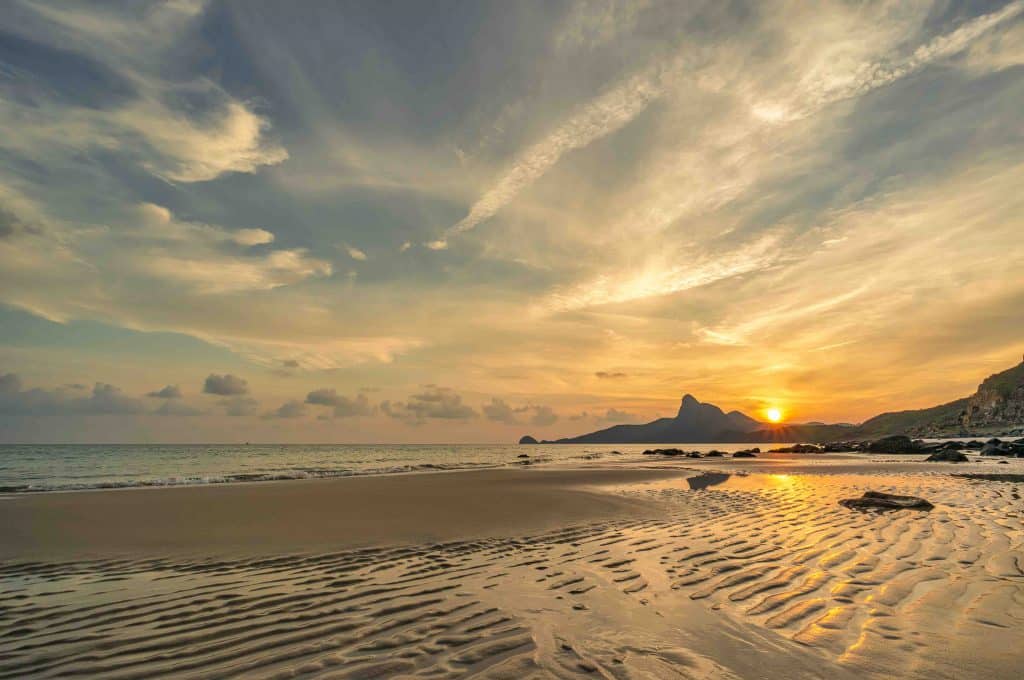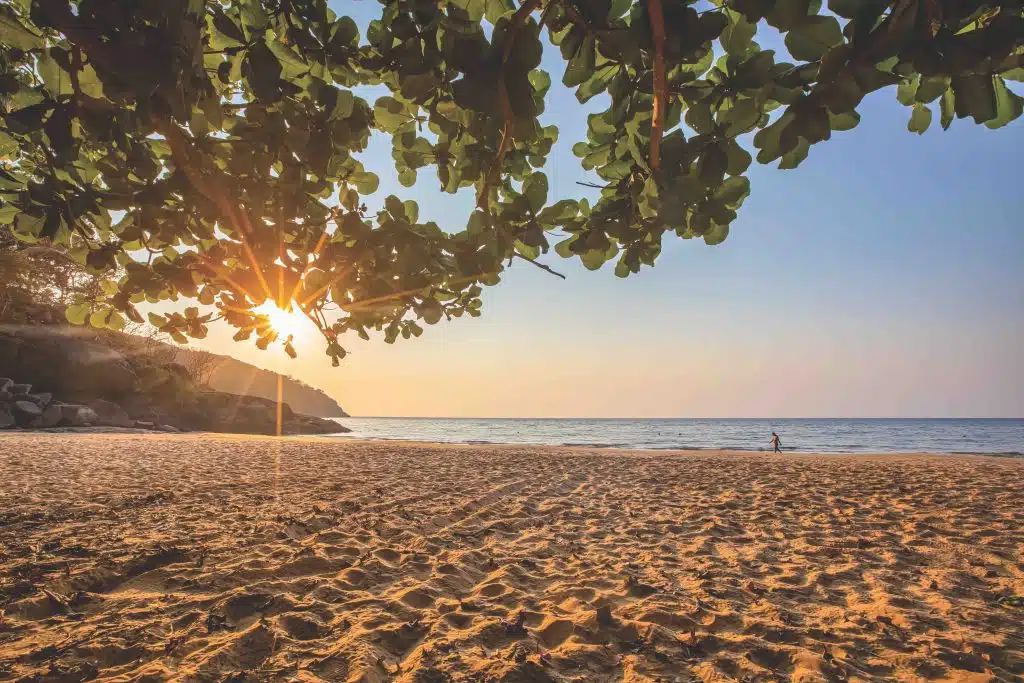Story: Yikla
Photos: Tonkin
Located off the coast of Ba Ria – Vung Tau province, approximately 185 km from Vung Tau City and 230 km from Ho Chi Minh City, Con Dao is renowned not only for its historical and cultural significance but also as a premier destination for spiritual tourism, drawing visitors who “wish to return to their roots”. Often referred to as the “pearl island” of southeastern Vietnam, this archipelago captivates eco-tourism enthusiasts with 16 large and small islands, pristine beaches, and clear blue waters. Con Dao’s picturesque landscapes and historic sites leave a lasting impression on visitors, making it a paradise for relaxation and exploration.

One of the most memorable beaches on Con Dao, Dam Trau Beach, has been honored by Travel & Leisure magazine as one of the 26 most beautiful beaches in the world. This magazine praised it as the most beautiful beach in Vietnam and one of the four most stunning beaches in Asia, highlighting its “special golden sand, gentle waves, and cool green canopies“. Dam Trau Beach is an ideal spot for “swaying in a hammock to read a book on the beach or walking with the waves and enjoying freshly picked coconuts“. Located next to Co Ong Airport on the outskirts of Con Dao National Park, Dam Trau is only about 15 km from the town center. The beach is pristine and tranquil, with a primary forest behind it and a vast stretch of beach in front. Precarious cliffs jut into the sea, and airplanes occasionally fly overhead during takeoff and landing, adding a unique charm. Dam Trau attracts tourists with its crystal-clear seawater, crescent-shaped coastline, rich coral ecosystem, and small paths leading into the mangrove forest. It has become an indispensable stop in the journey to explore Con Dao.

The locals have a saying: “Whoever comes here, please ask Mr. Câu – How far is Hòn Cau (Cau Island) from Đầm Trầu (Trau Beach)?” This saying stems from a sad story about a young man named Trúc Văn Cau and a girl named Mai Thị Trầu, long ago childhood sweethearts in Co Ong village who, tragically, could not be together. The young man passed away, and his name was given to Hòn Cau (Cau Island), while the girl drowned herself off what is now named Đầm Trầu (Trau Beach). Mr. Câu, the father of Trúc Văn Cau, chose to live in seclusion in the northwest of the island, at what is now called Ông Câu Beach. Ông Câu Beach boasts wild nature, with a vast primary forest embracing a pristine coastline untouched by human footprints. Setting foot on Ông Câu Beach truly feels like experiencing the ancient charm of Con Dao during the Reclamation Era of Lord Nguyen, making one appreciate the ecological beauty even more.
Located closer to the center of Con Dao, along the stunning coastal road that stretches from Cua Tu to Mui Ca Map (Shark Cape), Nhat Beach is a hidden gem. This place is perfect not only for couples who come to admire Love Peak but also for solo travelers who can enjoy a date with the stunning sunrise and sunset. From Shark Cape, one can admire the silhouette of the hill beside Nhat Beach, resembling a couple sitting by the sea, hence the name Love Peak. When the tide recedes at Nhat Beach, it reveals a vast expanse of rocks of various sizes and shapes. As the water rises, it creates white foam that reflects the famous blue hues of Con Dao’s sky.
Lastly, we cannot forget the largest and most tranquil beach for tourists – Con Son Bay Beach – located on Ton Duc Thang Road along the coast next to the relic of 914 Pier. Sea almond trees line the winding road, which appears melancholy at dusk during the season when the trees lose their leaves. However, Con Son Bay always feels warm and inviting, with boats moored offshore. This place is perfect for families wishing to relax in the sea and for those interested in learning more about the fishermen’s daily lives.
Con Son is the largest island in the Con Dao district. The best time to explore the east and northeast of the island is from March to September, especially during the sea turtle breeding season from July to September. From October to March, the northeast monsoon brings large waves to Con Son Bay, so visitors should stick to exploring the west and southwest to avoid any bad weather.

Once known as “hell on earth”, since patriotic martyrs were exiled here for over a century, Con Dao has undergone a spectacular transformation into a prime destination for marine eco-tourism. This metamorphosis stems from a rare blend of pristine scenery and the enduring presence of the islands’ residents, who have preserved their clean and green environment for many years.










